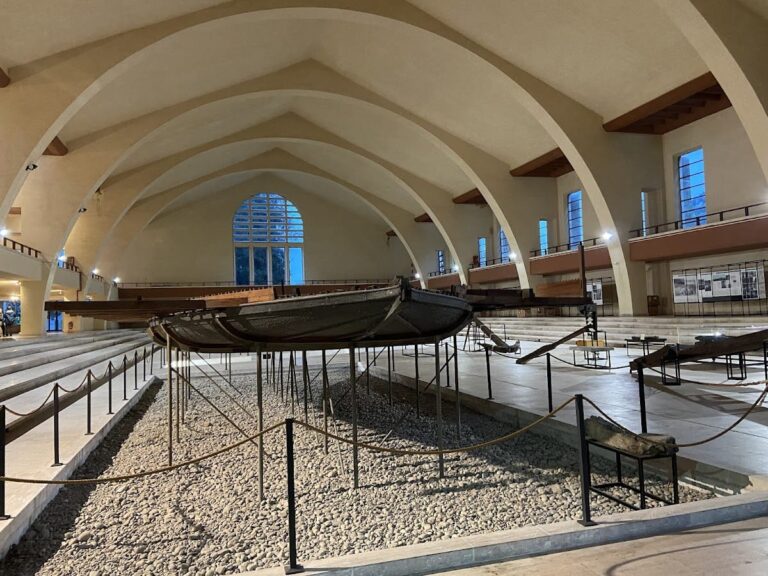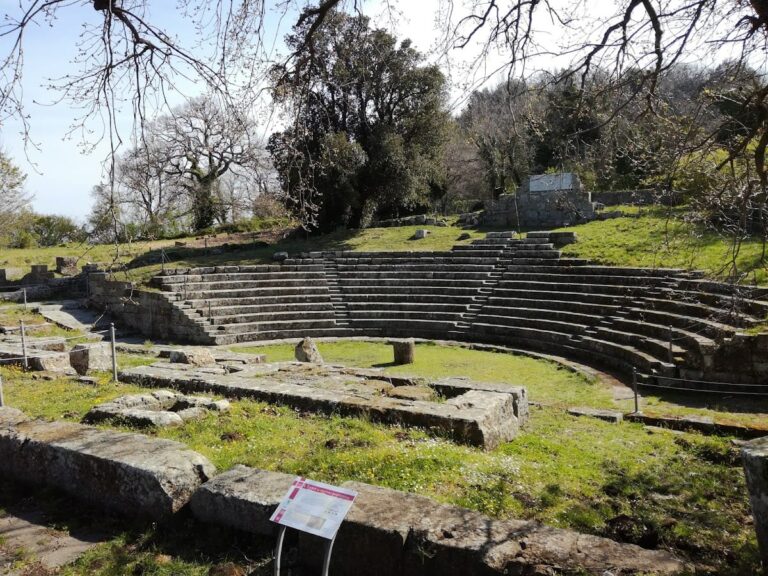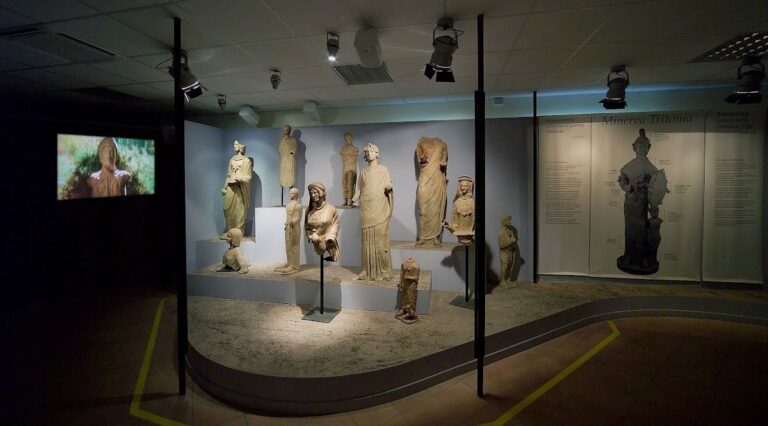Villa Sforza Cesarini: A Historic Site in Lanuvio, Italy
Visitor Information
Google Rating: 4.6
Popularity: Low
Google Maps: View on Google Maps
Official Website: www.retedimorestorichelazio.it
Country: Italy
Civilization: Roman
Remains: Religious
History
Villa Sforza Cesarini is located in the municipality of Lanuvio, Italy, on a site with a long history dating back to ancient times. The area originally hosted a sanctuary dedicated to the goddess Juno Lanuvina, also known as Juno Sospita, a deity worshipped by the local population during the Roman era.
The sanctuary underwent several phases of reconstruction from the late 7th century BCE through to the mid-1st century BCE, reflecting its sustained religious importance over many centuries.
In the early 20th century, specifically in 1906, Francesco Sforza commissioned the construction of a small villa on this historically rich location. The villa was designed in the Liberty style, an Italian variant of Art Nouveau, but with a restrained approach that drew inspiration from Roman revivalist architecture rather than the more common floral motifs of the style.
Shortly after its completion, the villa suffered a devastating fire that caused extensive damage. Among the losses were a valuable library and numerous artworks, including rare editions of Dante Alighieri’s Divine Comedy from the 15th and 16th centuries, a 1499 edition of the Renaissance book “Hypnerotomachia Poliphili,” as well as tapestries, furniture, and paintings by renowned artists such as Titian and Van Dyck.
Following World War II, the villa was repurposed as a summer colony, reflecting a shift from private residence to communal use. In 1978, the property was expropriated by the local municipality and became public property during the 1980s. Today, it serves as a cultural hub, housing part of the Museo Diffuso and the local public library, continuing its legacy as a place of knowledge and community engagement.
Remains
The villa occupies a site that integrates with the surrounding archaeological landscape, situated prominently on Colle San Lorenzo in Lanuvio. Its design reflects a careful balance between the early 20th-century Liberty style and the historical significance of the location, avoiding typical decorative floral patterns in favor of a more subdued Roman revivalist aesthetic inspired by ancient, Renaissance, and Baroque architecture.
One of the villa’s most remarkable interior spaces is the Sala delle Colonne, or Hall of Columns. This room is distinguished by two smooth marble columns of notable historical value. The first column is made of Cipollino marble, a greenish stone quarried in antiquity, and dates back to the 2nd century CE, indicating the reuse of ancient materials within the villa’s construction. The second column is crafted from Grigio Carnico marble, whose exact age is uncertain, but it is believed to have originated from estates owned by the Sforza Cesarini family in the Sabina region.
The Sala delle Colonne features white marble flooring and large windows that allow natural light to fill the space, enhancing the room’s elegant and serene atmosphere. This combination of ancient elements and early 20th-century design highlights the villa’s unique architectural character and its connection to the historical context of the site.
Overall, the villa’s layout and materials demonstrate a thoughtful integration of historical references and modern construction, preserving the memory of the ancient sanctuary while creating a distinctive early 20th-century residence. The presence of ancient marble columns within the interior serves as a tangible link to the site’s long-standing cultural and religious heritage.







